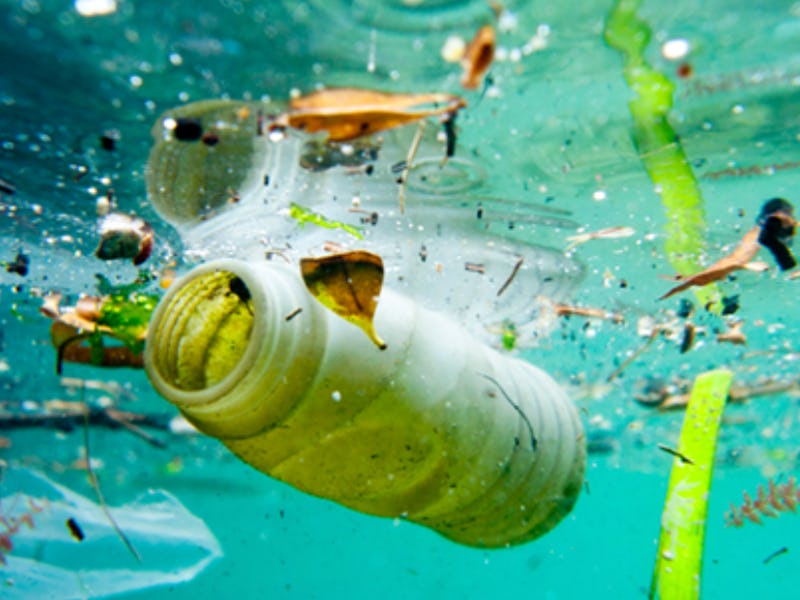Human Poop Reveals How Bad the Microplastics Problem Has Become
Imagine the Great Pacific Garbage patch, but in our guts.

If the Great Pacific Garbage Patch showcases the disturbing amount of trash in our oceans, then human poop illustrates the accumulation of plastic in our bodies. In a new study, scientists’ results hint that when it comes to microplastics, what goes in may not always come out.
Microplastics are tiny pieces of plastic, less than 5 millimeters (0.2 inches) across, that are either manufactured to be tiny or are worn down from larger pieces. Regardless of how they’re formed, they’re small enough that they can collect in some hard-to-reach places.
Research, presented on Monday at the 26th United European Gastroenterology Week confirms the sobering fact that microplastics are capable of accumulating in the human intestinal tract. Lead study author Philipp Schwabl, Ph.D., of the Medical University of Vienna, worked with Bettina Liebmann of the Environment Agency Austria to show that out of eight individuals from the UK, Austria, Finland, Italy, the Netherlands, Poland, Russia, and Japan, every single one had traces of microplastics in their stool. Schwabl and Liebmann say seafood and water bottles are to blame.
“The results found an average of ten microplastic particles per 10 grams of stool,” Schwabl tells Inverse. “Human hair is around 100 micrometers thick and the microplastic particles we found in the study had a size between 50 and 500 micrometers.”
Plastic and Poop
While all people in this study had plastic in their poop, not all of them were as susceptible as others. Quantities varied wildly among the volunteers in their small sample, ranging between 18 and 172 particles per 10 grams (about one-third of an ounce). Importantly, the fact that some microplastics came out in these stool samples suggests that there’s still some left on the inside. This, says Schawbl, may be early evidence that microplastics can actually build up in the intestine over time, where it can cause inflammation in the gut and lead to cell damage.
“It is a very important question and we are planning further investigations to elucidate the effects of microplastics on human health,” Schwabl says. “Furthermore, in animal studies it has been shown that microplastics may cause intestinal damage, remodeling of the intestinal villi, distortion of iron absorption, and hepatic stress.”
It isn’t just the intestines that are in danger. Some animal models have shown that microplastics are capable of making their way around the body once they’re digested. A review in Current Environmental Health Reports published in August explained this by showing that certain cells in the gut can transport the tiny particles from the digestive system into the bloodstream. From there, they can end up pretty much anywhere in the body.
Two Main Culprits
Schwabl’s work suggests that two major types of microplastics, polypropylene (commonly used for bottle caps and rope) and polyethylene terephthalate (commonly used for drink bottles), get into the body through seafood consumption. Researchers have proposed this possibility before but had not confirmed it through real tests on humans. Now, Schwabl’s work lends powerful evidence to this claim by showing that seafood consumption is correlated with microplastic content found in stool.
A shrimp containing traces of microplastic particles. This paper shows that seafood is just one way that these particles can get into the human body
“In our study, most participants drank liquids from plastic bottles, but also fish and seafood ingestion was common,” he says. “All participants had PP and PET particles in their stool samples, which are major components of plastic bottle caps and plastic bottles.”
Food packaging materials, like plastic water bottles, are another likely route for microplastics into the human body, but this study alone can’t confirm this, since all subjects both ate seafood and drank an average of 750 milliliters (about 25 fluid ounces) of water a day from plastic bottles. A larger-scale replication of this study will no doubt elucidate its findings, but Schwabl hopes his work will move the field in the right direction. Each day we learn more about microplastics, we realize how little we know about how they impact human health.